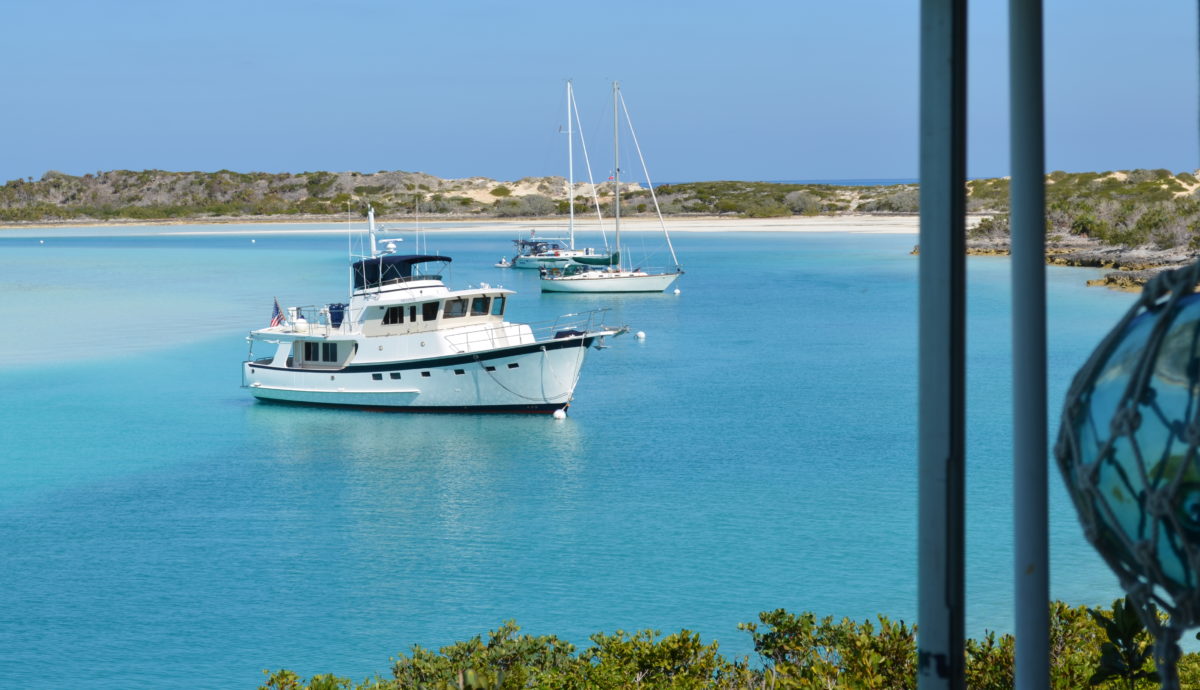
We installed flopper stoppers as part of the build and commissioning process three years ago. And never used them until just last week. Not that we haven’t rolled, we have. But were heretofore either too lazy or too late to deploy them. More on the “too late” comment later.
For those of you unfamiliar with the various stabilization options for a trawler such as ours, there are two approaches to enhanced stabilization while running, paravanes or hydraulic fins. We have hydraulic fins for stabilization while underway. They work well, as long as the hydraulic systems are operational. Paravanes also work well, but do not require hydraulics, so you might see a serious ocean crossing trawler with both for redundancy.
Paravanes and flopper stoppers look somewhat similar, so might be confused with each other. But paravanes drag a “fish” though the water that dives with speed and this creates very strong loads on the system. Paravane systems are therefore pretty beefy. You see them on commercial fishing boats everywhere.
Flopper stoppers just pull drag panels up and down while the boat is at anchor and therefore are not nearly so strong. Looking at the picture above, you can see how the system functions. Poles are deployed from either side of the superstructure, guyed from the mast above and then with lines fore and aft. The drag panels, we call them doors, are then lowered from the boat deck into the water. They function by sinking easily but providing resistance when pulled up; the “doors” open and close in opposition to each other with the roll of the boat.

Here is one of the doors. You can see it is hinged down the centerline, with cables for connection to the down line. They are about 3’x3′ and weigh about 20lbs. They can be a bit awkward to raise and lower. They can easily bang against the hull if you either are not careful, or you are already rolling. And this is what I meant about being “too late” to deploy the system.

These guy lines hold the pole out perpendicular to the boat and horizontal with the water.

The poles tuck up against the boat deck when folded back and then pivot out when deployed. The operation can be a little tricky. The attachment point also needs to be well reinforced. We specified the system at time of build so this area was beefed up in the mold. This can be accomplished as an aftermarket operation but requires a bit of work, with maybe some advice and councel from the builder. I know some folks have mounted their poles lower on the hull in order to make it easier to reinforce.
Note that we have a mast. We had originally specified an arch but the builder determined that the arch did not have sufficient height to enable the angles necessary to support the poles. Now that we have the mast, we sorta like the look! As an aftermarket install to a boat with an arch, a center pole for support might work well.
Our poles are carbon fiber to keep them light, but aluminum works well. They look like re-purposed spinnaker poles and that is probably what they are (were).
Deployment takes about 15 minutes if you keep all the lines attached. We are looking at adding additional lines to aide in dropping the doors over the side and may have storage bags fabricated that attach to the outside of the boat deck rails to simplify deployment and retrieval.
So, how does the system work? We are quite pleased with our first experience. We were anchored in a bay with direct wind protection but were expecting a wrap around swell with an oncoming front. When the swell arrived we did roll, but the roll max angle was lower than expected, the roll rate was much slower and the roll attenuated much faster than in the past. After an initial roll, the next roll was about 50% of the first, and so on.
This was a mild swell, visible to the eye but less than a foot in height. Plenty to roll us when abeam the swell. We were able to sleep through the night just fine.
We do have a concern about what we would do if we needed to vacate an anchorage in an emergency. Lots of gear in the water. Although we haven’t tried it, we believe we could motor short distances at low speed, to re-anchor for example, with the doors just raised out of the water. For more estensive maneuvering we could pull the doors up on deck but leave the poles extended. Not a perfect solution, but it could be done quickly.
We are headed to Cambridge Cay next and will be there for a month. With a strong North wind a pretty good swell can come in so we will deploy the system for the entire month and report back on performance.

Great write up on the flopper stoppers and how they work. I can see how they might be a pain in a crowded anchorage but where you just got done cruising that doesn’t seem to be the issue!